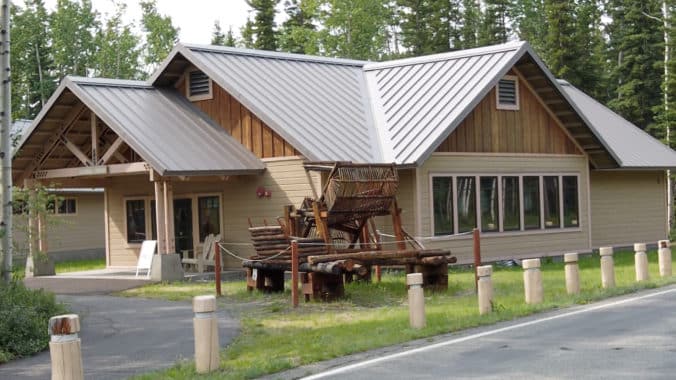
The Ahtna Cultural Center, now closed for the season, reopened for the first time since the COVID pandemic last summer. Situated on the campus of the Wrangell-St. Elias National Park administrative office and visitor center, the Cultural Center offers the opportunity to learn about Ahtna language, history, and contemporary culture.
I was fortunate to visit the Center on a relatively quiet day in late August. Supervisor Edward GreyBear gave me a tour. He and two interns, Damien Shank and Ryan George, walked hundreds of people through the center throughout the busy summer.
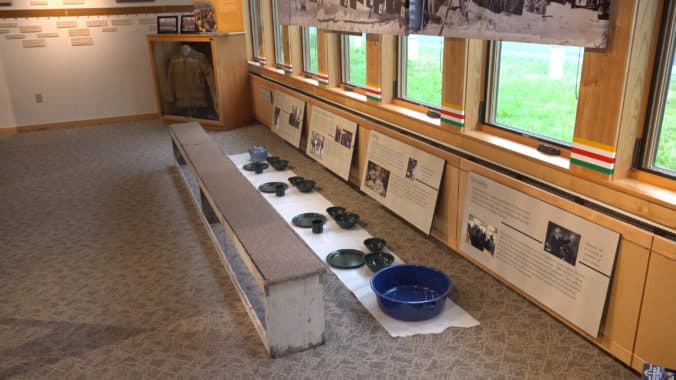
By the time I visited the Center, the interns were back to high school. “It’s kind of quiet here without them,” said GreyBear.
Within the small space, there are photos, displays, and tools from throughout Ahtna history and the modern day.
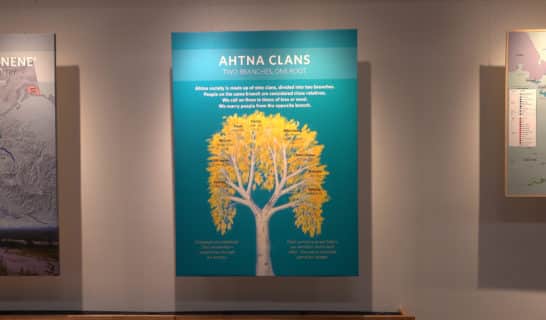
After a brief introduction to where Ahtna people live and to Ahtna clan structure, a series of displays walks visitors through time that starts with the story of the beginning of the world and goes on to the modern day.
A timeline on one wall also shows major events in Ahtna history including battles, migrations, epidemics, and trade history. Contemporary archaeology that Ahtna, Inc. is involved in, in partnership with various universities, is also featured.
One wall is dedicated to potlatches. GreyBear talked about what is traditional and what is contemporary in potlatches, and shared his own experiences participating through his life. He said his favorite part, more than the food, gifts, or dancing, is the time dedicated for Elders’ speech. He remembered that as a young boy he was told to “Be quiet, pay attention. If you’re lucky enough you learn something.”
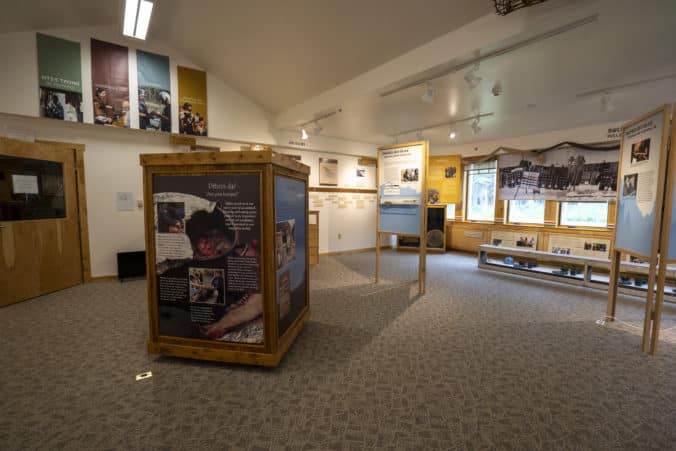
GreyBear also noted that during a potlatch, when giving gifts it is important to recite the family lines of the gifts’ recipients. He said he strives to do it from memory, although he acknowledged that in contemporary times some people use written notes to make sure they get it right. Gift-giving traditions at memorial potlatches are very specific and are in accordance with the bereaved’s obligations to the potlatch hosts.
According to GreyBear, in contemporary times, many potlatches are for memorial purposes. However, both traditionally and in the modern day they can occur to mark a variety of occasions.
The center of the Cultural Center is dedicated mainly to subsistence: its many seasons and techniques in addition to the relationship that subsistence requires between the people and the natural world.

Tools include a pair of snowshoes made by the late Joe Bell of Chistochina and, outside, a fish wheel built by the late Johnny Goodlataw of Chitina and Tazlina. Details in people’s work tell about where they came from. For example, Bell’s snowshoes feature red decorations signifying where he was from.
Photos include portraits of many area residents past and present, taken all over Ahtna country. There are also surprising historical pictures such as that of a group of Ahtna women with sledgehammers acting as local “Rosie the Riveters” on a railroad track during World War II.
Jewelry, clothing, and regalia are on display as well. It was notable that some of the highly valued jewelry was made from marine organisms, which the landlocked Ahtna would have had to trade for in the past. Some of the “long beads” used today, which can be made from a variety of materials including plastic, look similar to those marine shells.
Local materials such as fur, leather, and porcupine quills also feature in traditional and contemporary designs.
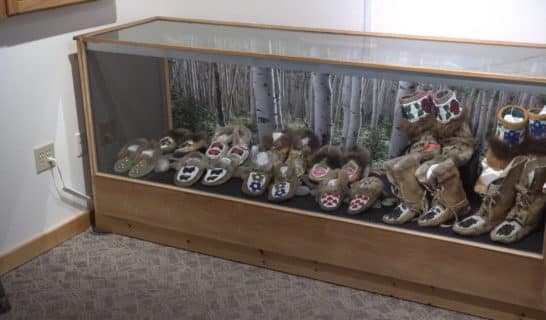
All the displays contain Ahtna vocabulary. GreyBear quickly gave both the English and Ahtna words for the topics he discussed. He credits his grandmother Ina Lincoln for ensuring that he listened to enough Ahtna language to learn it.
More than the physical displays, the Cultural Center offers an opportunity to hear stories. Each person who visits brings their own knowledge, cultural background, personal experience, and interest. Because of that they will ask different questions and hear different stories.
If you didn’t have a chance to visit the Cultural Center last summer, you can find some of the photographs and stories shown there in the book Ahtna: The People and Their History, which is available through Ahtna, Inc. at www.ahtna.com/book.
